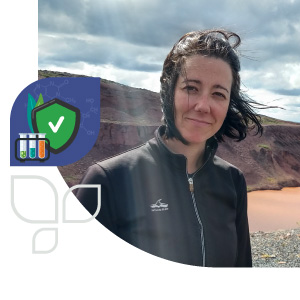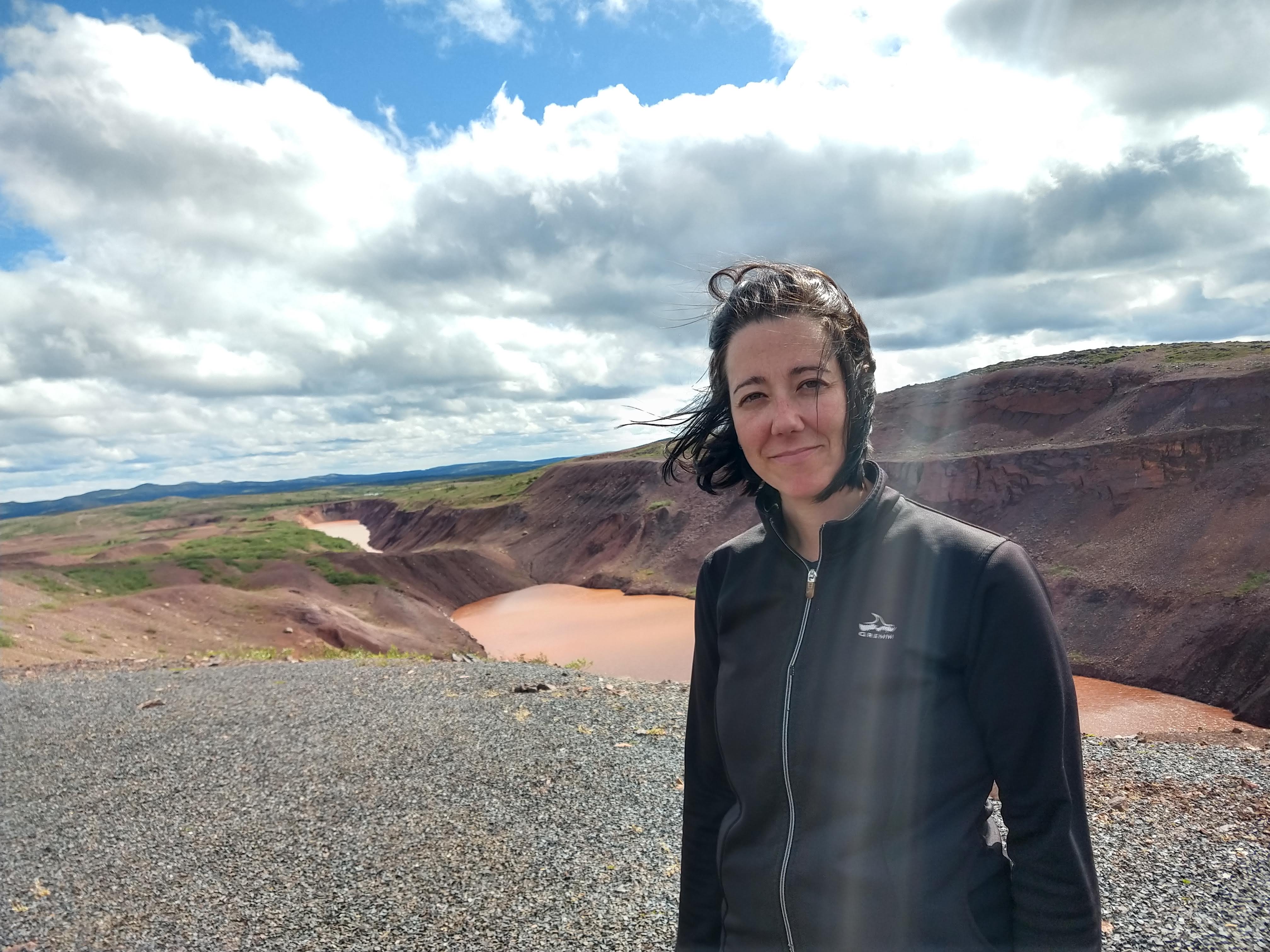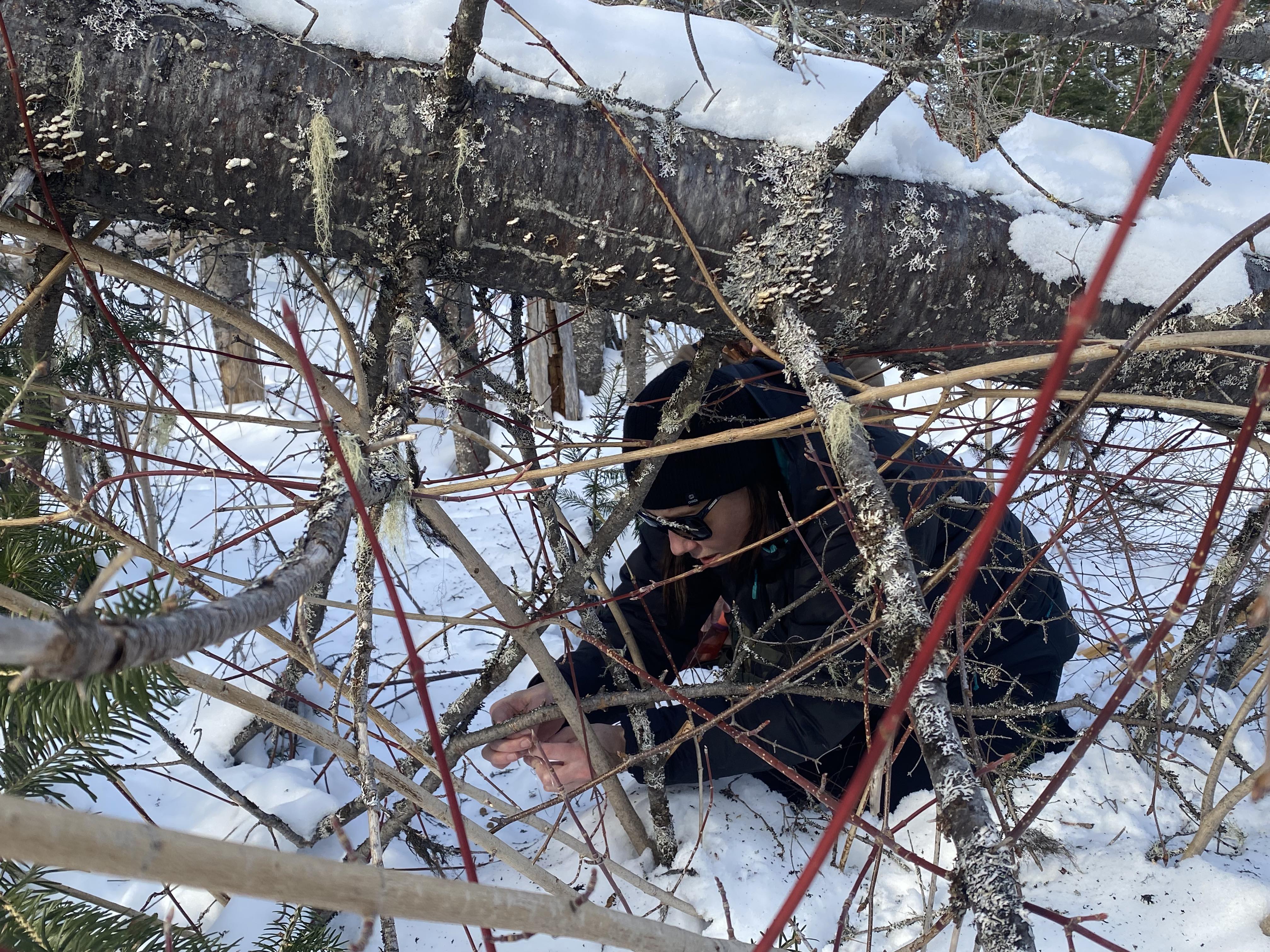Guided by her values
Profile of Emilie Reny-Nolin
Guided by her values

Emilie Reny-Nolin is a scientist who holds a very special position at Environment and Climate Change Canada (ECCC). She advises on and coordinates science programs, as well as serving as an Indigenous liaison officer for groups in the Science and Technology Branch and for the Regional Branch for Eastern and Central Regions. If her position is unique, so is her career path. Emilie is a great animal lover, and from an early age her parents instilled in her the value of protecting nature and the environment.
She began her career as an animal health technician and then went on to specialize in biological sciences with a focus on ecology at university. After working as an animal health technician in the emergency department of a veterinary hospital and at the Montreal Heart Institute, as well as acting as a first responder for marine mammals in difficulty, Emilie developed an unrivalled specialization in collaborative science work with the Indigenous communities in northern Quebec.
Going outside her comfort zone
The idea of collaborating with northern communities came up in 2017, while Emilie was completing her master's degree in environmental biogeosciences at Université Laval in Québec City. “I chose this master's degree because it covered a multitude of environmental disciplines, and I could take courses in many different subjects that interested me. It was the perfect curriculum to satisfy my curiosity,” explains Emilie, who had just returned from trips to the Philippines and Vancouver. This experience further developed her interest in understanding the dynamics of natural ecosystems.

“I saw a position advertised for students to take part in a project to study the impact of off-road vehicles on communities in northern Quebec. I was attracted by the practical aspect of this study, but I also wanted to do it to get out of my comfort zone—it involved going to regions I wasn't familiar with and working with people whose way of life I knew nothing about,” says the scientist, who is not afraid to take on challenges.
She contacted the person in charge of this project at the Institut national de la recherche scientifique (INRS) in Québec City. One thing led to another, and Emilie was given a research officer position to manage the MiraNor research project, which brought together five independent researchers and their students, in a project involving ecotoxicology, geomorphology, and environmental hydrology. The goal: to restore and protect fish habitats affected by mining activity near the Innu community of Matimekush-Lac John, close to Schefferville. Thanks to the Environmental Damages Fund administered by ECCC, the MiraNor team was able to implement an ecotoxicology project in this area of the Caniapiscau River watershed to address the environmental concerns of the communities involved.
Bridging the gap between scientists and Indigenous Guardians
“I had everything to learn when I started the job! I had to build my network of contacts, manage budgets, support students with their research protocols and organize their field visits, and above all, learn to forge ties with people in northern Indigenous communities,” recalls Emilie. Fortunately, she had the support of people already well established in the field, notably Alexandre-Guy Côté, Indigenous Affairs Advisor in the Regional Branch for Eastern and Central Regions at ECCC, who quickly became a mentor and guide for her career.

Once the MiraNor project was completed, Emilie joined ECCC as part of a pilot project launched in 2022 by the Regional Branch for Eastern and Central Regions and the Science and Technology Branch. The project was started to more effectively coordinate ECCC's day-to-day operations with developing and implementing research projects led by the Science and Technology Branch with Indigenous communities in the Quebec region. In this context, Emilie began her work as a liaison officer between scientists, organizations, and approximately 50 Indigenous communities, facilitating the development of collaborative research projects between researchers and members of the Indigenous communities.
“My job is to establish a dialogue with the communities, listen to their needs and environmental concerns, and then bridge the gap with ECCC scientists to help them develop research projects that take everyone's realities into account, all while facilitating collaboration with the Indigenous Guardians, who know their regions better than anyone!” says Emilie, inspired by this project that is completely in line with her values in science, conservation, and collaborative work.
One project leads to another
Emilie's work takes on its full meaning when it addresses Indigenous communities' concerns and follows the health of wild animal populations that are sometimes at risk. “Thanks to the work of all parties involved, we can answer concrete questions. It can take time to get answers, but the results are tangible,” she explains. The long-term nature of such projects is indeed a challenge, and Emilie is also involved in fundraising to ensure the sustainability of the projects she undertakes with her partners.
My work is varied and allows me to touch on many aspects of science, but what I love most about my role is that people are at the heart of what I do—being in contact with members of Indigenous communities is an enormous motivator to me. We have so much to learn from them.
For example, in 2022, ECCC wildlife biologist Philippe Thomas, in collaboration with researchers from the University of Ottawa and the support of Emilie and her team, developed a laboratory prototype for assessing the health of caribou herds by using their feces, collected by members of Innu communities in northern Quebec. Having completed this proof-of-concept phase, the researchers are now aiming to develop portable hormone analysis systems capable of withstanding the harsh northern climate. In this way, the Indigenous Guardians can analyze caribou feces for stress or reproductive hormones themselves, thus promoting their autonomy and enabling them to build up their own database of information on caribou health, which is one of their goals. The completion of this project, scheduled for 2026, is a source of great pride for Emilie.

Emilie quickly realized that when the results from their projects are shared with communities, those results often raise new questions that can lead to new scientific investigations. When asked, “What was your biggest learning experience since the beginning of this pilot project?”, Emilie answered, “The importance of listening. When I arrived in the communities, I had a lot of things to tell them, but I realized the importance of listening to their concerns and their teachings, which are very valuable. This helped to develop relationships of trust and even friendships! Their collective memory and ancestral knowledge must absolutely be integrated into how we conduct our projects. That's what reconciliation with Indigenous communities is all about.